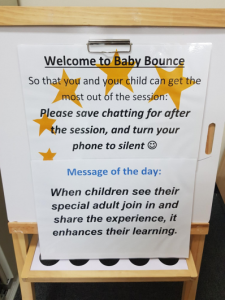5 top tips: First 5 Forever messages for families
By administrator | 26 February 2018

Did you tune into the latest First 5 Forever webinar? Library staff from across Queensland come together regularly to share tips and talk about key elements of their local programs.
This month, Carly St Clair from Mackay Libraries shared her top tips for providing First 5 Forever messages to families.
All upcoming webinars, including this one are recorded and below you'll find a summary of the top 5 tips from Carly's contribution.
- Have a reason behind the message One idea is to include the message as part of the instruction for what’s next e.g.. “Now we are going to sing Row, row your boat. It’s a great idea for your baby/child to see your face because children learn more words when they can see you talking, so turn your children around so they are facing you. Ready…”
- Add transitions to avoid ‘clunkiness’ Carly uses “ready”, as a cue to children and families that it’s now time for a song. This helps families to know what’s coming next
- Focus on quality Every message must have a reason and include a ‘why’
- Why are we singing slowly? To allow children time to join in
- Why should books be available down low in the home? To provide children opportunities to access books and choose books themselves. You can also add library messages about baby’s chewing books to inform parents of the library policy
- Why do we repeat songs or books? This is how children learn best and allows them to join in
- Share books as a group Consider purchasing book sets. By giving each family a book, you have the opportunity to add in messages e.g.
- Did you know you can start reading to your baby now, the earlier the better
- You can see some toddlers can be active when books come out, that’s OK, see what interests them, let them turn the pages, talk about the pictures
- Make messages visual This helps cater for all types of learning. Mackay libraries have a daily message board where messages are displayed. This allows for more complex messages around topics such as brain development to be added for those families who are interested, as well as simple, practical messages that can be implemented straight away, such as the importance of families joining in.


Don’t avoid messaging. Have a go! The more you include them, the more messages you will add to your own toolkit and the more confident you’ll become. Libraries are fantastic places for families to access thousands of books, but also to receive early literacy tips. Libraries play a role in helping families continue early literacy at home and we communicate these ideas through our messaging
Comments
Your email address will not be published.
We welcome relevant, respectful comments.